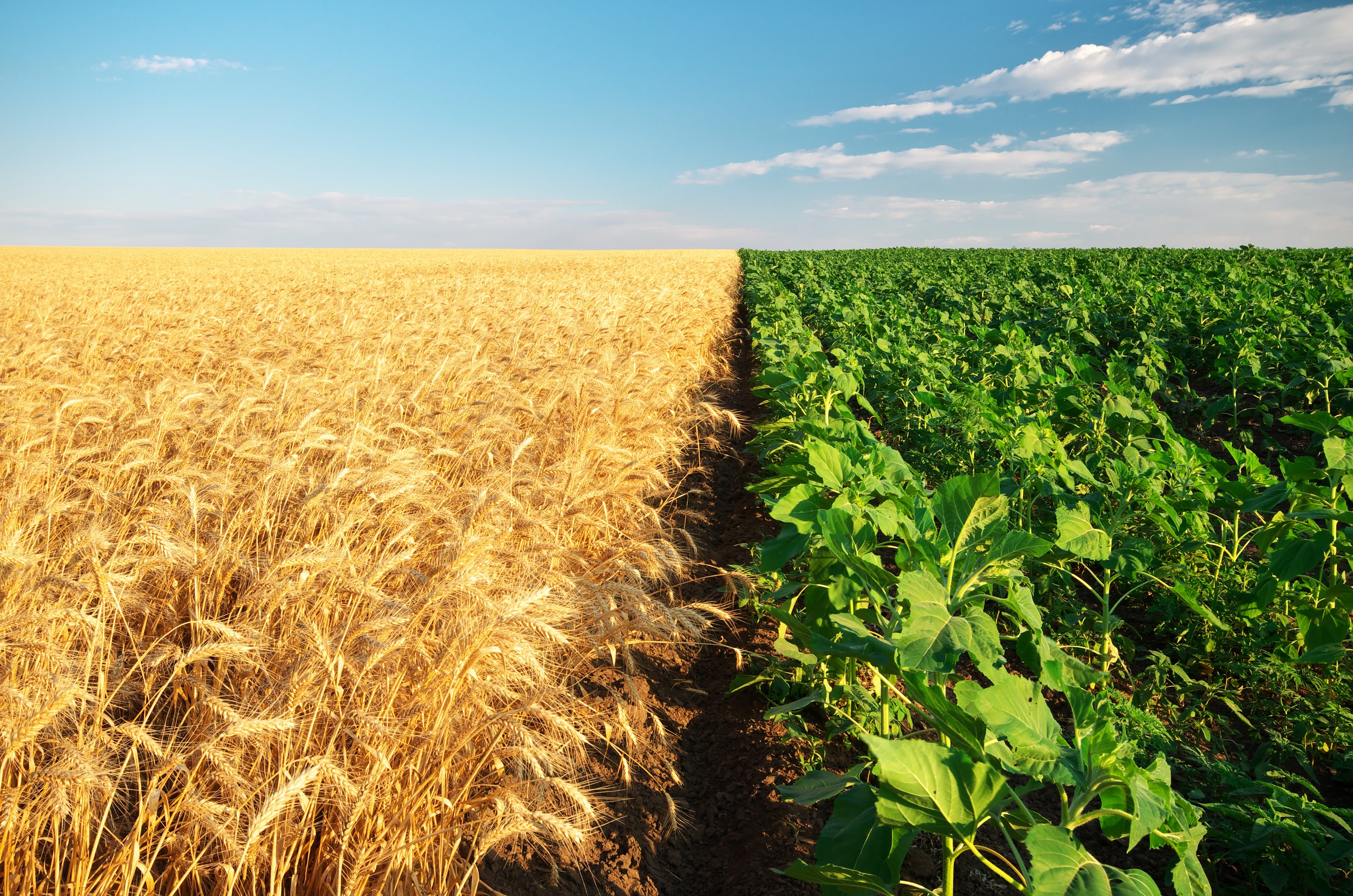Life on Land: The Role of Alternative Proteins in Reducing Land Use
Did you know that shifting to Alternative Proteins could free up over 47 million acres of U.S. cropland? This transformation would allow for large-scale ecosystem restoration, which is critical for meeting climate and biodiversity goals. The Good Food Institute (GFI) recently published a detailed report revealing how Alternative Proteins – plant-based, fermentation-derived, and cultivated meats – can significantly reduce land use, offering key solutions to the environmental challenges posed by traditional animal agriculture.
How Alternative Proteins Transform Land Use
One of the most profound impacts of Alternative Proteins is their ability to dramatically reduce the amount of land required for food production. Traditional animal agriculture, especially livestock farming, is one of the most land-intensive systems. Cattle farming, for example, requires vast areas of land for both grazing and growing feed. A recent GFI report shows that animal farming uses 35% of the world's habitable land, much of which is dedicated to growing feed crops such as soy, corn, and barley. In the U.S. alone, 90% of cropland is used to support livestock agriculture.
In contrast, Alternative Proteins are far more efficient in terms of land use. These proteins require significantly less space to produce the same amount of protein as conventional meat. For example, while traditional animal proteins require between 34 and 160 square meters of land per kilogram of protein, Alternative Proteins only need around 20 square meters. This means that a 50% shift toward Alternative Proteins could free up an estimated 47.3 million acres of cropland in the U.S. alone, which is equivalent to an area the size of South Dakota. Restoring this land could be used for critical ecological purposes, including carbon sequestration and habitat restoration.
But the benefits don’t end there. The land that is currently being used for animal feed production could be repurposed for more environmentally friendly uses, such as reforestation or wetland restoration. The GFI study highlights that a shift toward Alternative Proteins could enable the restoration of more than 60% of the U.S.'s threatened ecosystems. This includes prairies, wetlands, forests, and riparian areas, which are critical for maintaining biodiversity and reducing greenhouse gas emissions.
Comparing Land Use: Traditional vs. Alternative Proteins
To understand the significance of shifting to Alternative Proteins, it’s essential to compare the land-use demands of traditional animal agriculture with those of Alternative Protein production. Traditional meat production, particularly beef, is one of the most land-inefficient forms of food production. 36% of the world’s crop calories go directly toward feeding animals, and only a fraction of that energy is converted into consumable meat.
In the United States, 131 million acres of cropland are used exclusively to support domestic animal protein production. This includes 63 million acres dedicated to feed crops and 68 million acres to forage. With traditional livestock systems, there’s a massive land-to-protein inefficiency. For instance, producing just 1 kilogram of beef protein requires upwards of 160 square meters of land, as it includes not just the grazing land but also the feed crops needed to sustain the livestock.
Alternative Proteins, on the other hand, are far more efficient. Plant-based proteins such as soy and peas, fermentation-derived proteins like Quorn, and cultivated meats require significantly less cropland. On average, Alternative Proteins use just 20 square meters of land per kilogram of protein. This means that switching to Alternative Proteins could reduce land use by up to 90% per kilogram of protein produced.
Environmental Benefits: Carbon Sequestration and Biodiversity
The environmental benefits of shifting to Alternative Proteins go far beyond land use reduction. By transitioning away from animal agriculture, we can unlock significant carbon sequestration opportunities and biodiversity restoration efforts.
Carbon sequestration is the process by which forests, wetlands, and grasslands absorb and store carbon dioxide from the atmosphere. When we restore natural ecosystems on previously used agricultural lands, these ecosystems act as carbon sinks, helping to mitigate climate change. According to the GFI report, after restoring 50% of current cropland, we could sequester an estimated 177.8 million metric tons of CO2 annually. This figure is larger than the total CO2 emissions of all domestic flights in the U.S. each year.
There are two strategies for maximizing the environmental benefits of this restoration: a biodiversity-focused strategy and a carbon-sequestration-focused strategy. Under the biodiversity strategy, restoration efforts would prioritize areas that are home to threatened ecosystems, such as wetlands and riparian areas. In this scenario, 85% of the restored land would benefit 139 different ecosystems currently classified as threatened.
Meanwhile, under the carbon-sequestration strategy, restoration would focus on ecosystems with the highest potential to absorb and store carbon, such as forests and wetlands. Both strategies offer substantial environmental benefits, but the carbon-sequestration approach could increase the net national carbon sink related to all land use and forestry by 22%.
In addition to carbon sequestration, the restoration of these lands would significantly enhance biodiversity. Many ecosystems, such as prairies, wetlands, and forests, are currently under threat due to habitat destruction caused by agriculture. A shift toward Alternative Proteins would enable the restoration of over 60% of the U.S.’s threatened ecosystems. This restoration would not only protect wildlife and plant species but also support ecosystem services such as clean water, flood control, and pollination, which are also essential for humans.
Economic and National Security Benefits
Shifting toward Alternative Proteins also has profound implications for food security, economic stability, and national security. The animal agriculture industry is vulnerable to numerous risks, including zoonotic diseases, supply chain disruptions, and climate change. By diversifying our protein sources to include Alternative Proteins, we can create a more resilient food system that is less dependent on land-intensive practices.
Alternative Proteins are less vulnerable to supply chain disruptions. For example, the 2021 cyberattack on JBS, the world’s largest meat processor, highlighted the risks of relying on a highly centralized and concentrated meat industry. In contrast, Alternative Protein production, with its shorter supply chains and lower dependency on animal inputs, offers a more adaptable and resilient solution to future disruptions.
Furthermore, the economic potential of Alternative Proteins is significant. The global market for Alternative Proteins is projected to reach $290 billion by 2035, accounting for 11% of annual global protein consumption. By investing in the research and development of Alternative Proteins, the U.S. can position itself as a leader in this emerging sector, creating new jobs and economic opportunities.
Join the Alternative Protein Revolution
Do you want to contribute to sustainability and be part of the transformative Alternative Protein sector? Whether you're an experienced professional looking for a career change or a recent graduate, the Alternative Protein industry offers a unique opportunity to drive the future of sustainable food. At Tälist, we connect you with opportunities that match your skills and passions in the sustainable food industry.
Sign up now and get matched with job opportunities that create the future of food! Join us in making a significant impact on the environment, health, and food security by working in the Alternative Protein sector.
Want to know what concrete jobs in the Alternative Protein industry look like? Take a look at the numerous opportunities available on our job board and be part of the change towards a more sustainable and ethical food system:


